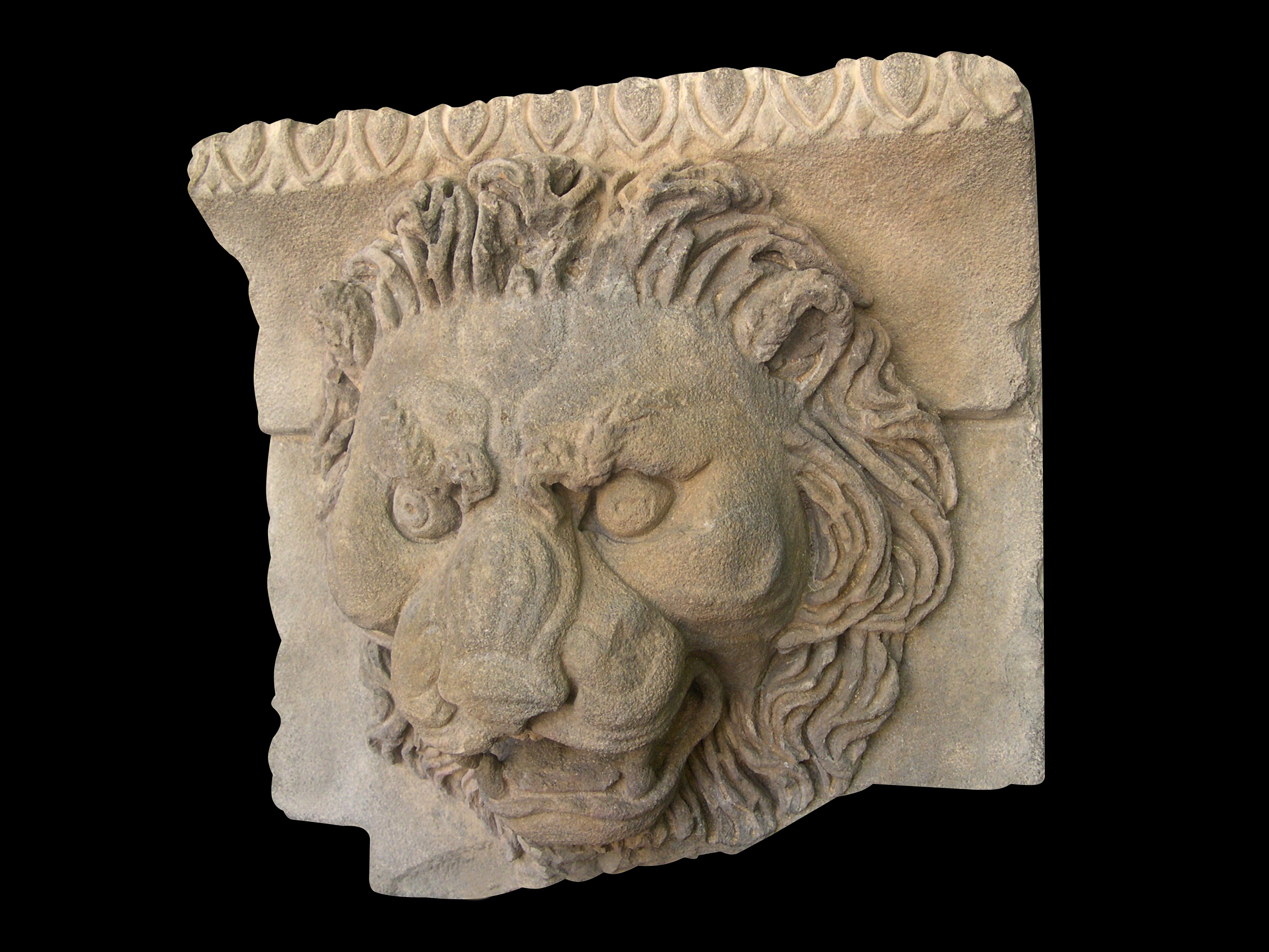Sima block with lion’s head spout
Sima block with lion’s head spout, missing the bottom left edge and chipped along the margins. On the lower two thirds the sima has a rectilinear profile, while on the upper part it bends outwards forming a large cavetto and it then is crowned by a band carved with an Ionic kymation; the latter is made of pointed eggs, held in rather flattened casings, alternated to equally flattened darts. Below the kymation, and for the whole of its height, the block is taken up by a large lion’s head. The animal shows a thick mane with large locks that fall at either side of the snout, framing it, and that are deeply and densely worked with drilled grooves. The snout, worked with fair plasticism, possesses a highly ferocious and somewhat pathetic expression: the jaws, wide open yet contracted, reveal the animal’s fierce set of teeth; the facial muscles, nose and cheeks are also contracted and rendered with bulging masses; the forehead and the frowned brows shadow the deeply set, yet globular and bulging, eyes that have cut iris and the outer margin schematically emphasized by a drilled groove which accentuates the fixed glare. The hair on the eyebrows is lively rendered with short chisel strokes, while the wrinkles on the forehead, nose and cheeks are handled in a quite abstract manner with grooves and incisions. Inside the mouth a large hole has been pierced to allow water drainage. Spouts with lion heads represent a widely common feature of the whole of ancient architecture, their use going back to fictile decorations of Archaic age and persevering, without solution of continuity, throughout the lithic architecture of the imperial and late antique periods. From a stylistic point of view, that is considering the abundant use of the drill in the treatment of the mane and the snout’s handling with bulging masses, our piece recalls the products of those workshops active in Asia Minor between the end of the II and the first half of the III centuries AD. On the other hand, the quality of stone employed may indicate a provenance from the South-Eastern part of the Mediterranean basin: basalt in fact was largely quarried and therefore widely employed for architectonic purposes in many of the ancient cities of Syria and Jordan (Bosra, Umm al Rasas, Qasr Azraq, etc).







